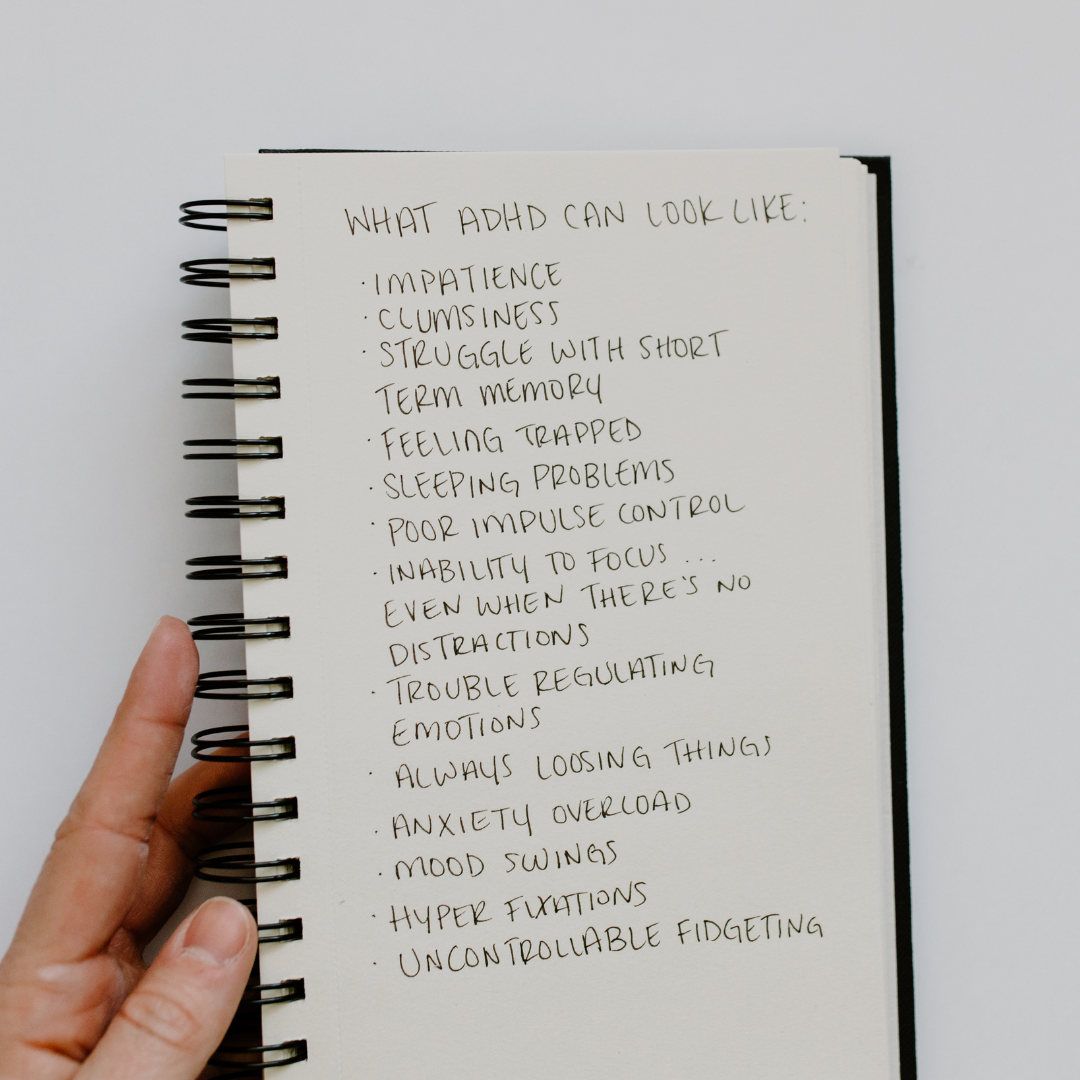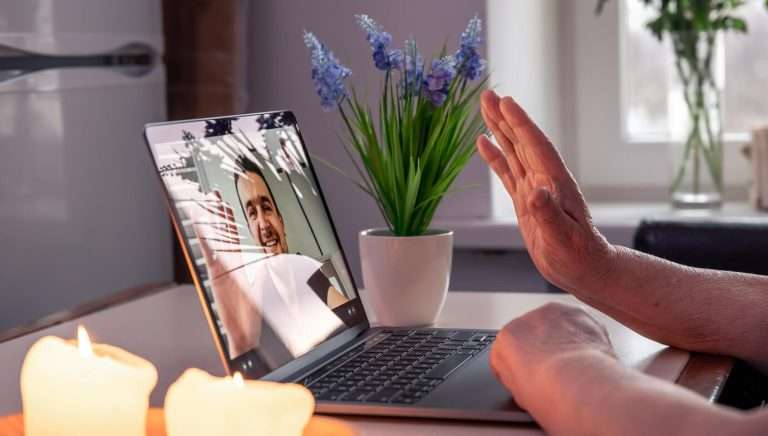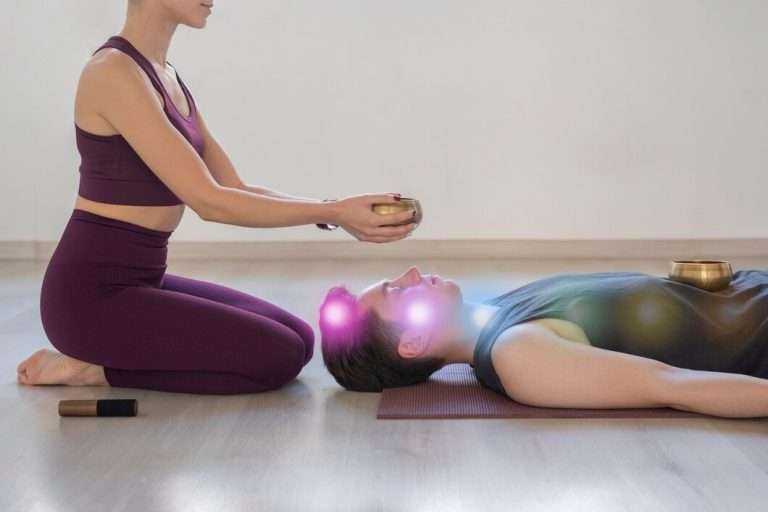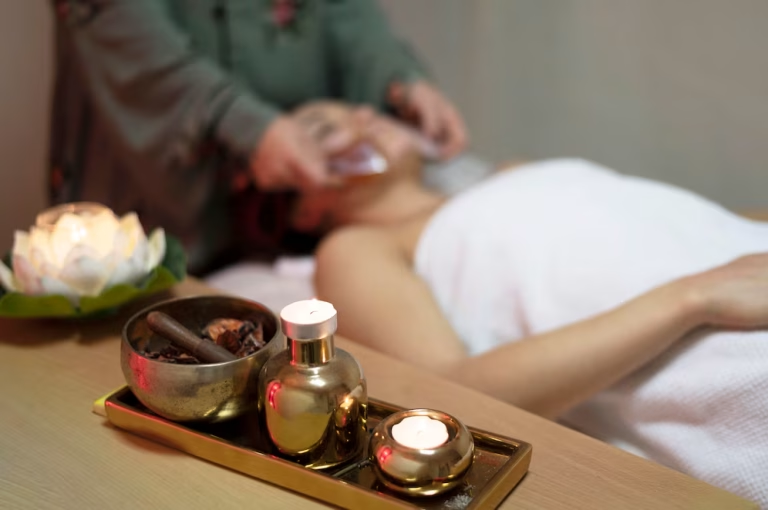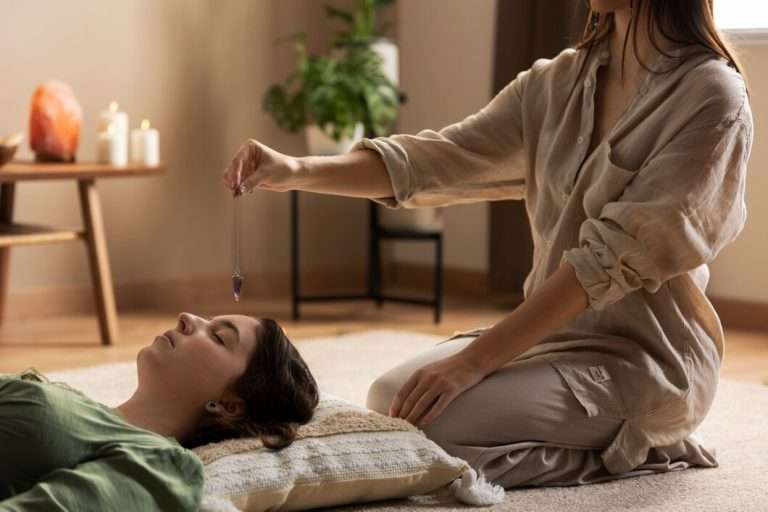How to Treat ADHD Naturally: Embracing a Balanced and Fulfilling Life
Table of Contents
Attention Deficit Hyperactivity Disorder (ADHD) affects millions of people globally, often making it challenging to maintain focus, control impulses, and manage daily activities. While medication can be beneficial, many seek natural methods to manage ADHD symptoms.
This article explores the best lifestyle choices for someone with ADHD, discusses the potential for living a normal life with ADHD, addresses whether ADHD gets better with age, and outlines the consequences of untreated ADHD. We also delve into the benefits of Eden Energy Medicine and Energy Psychology as part of natural treatments.
Understanding ADHD
ADHD is a neurodevelopmental disorder characterized by symptoms such as inattention, hyperactivity, and impulsivity. These symptoms can vary in severity and significantly impact academic performance, work efficiency, and personal relationships. There are three primary types of ADHD:
- Predominantly Inattentive Presentation: Difficulty sustaining attention, following through on tasks, and organizing activities.
- Predominantly Hyperactive-Impulsive Presentation: Excessive fidgeting, talking, and impulsivity.
- Combined Presentation: A combination of inattentive and hyperactive-impulsive symptoms.
Best Lifestyle for Someone with ADHD
A holistic lifestyle incorporating diet, exercise, sleep, and mindfulness can greatly enhance life quality for individuals with ADHD. Here are some key strategies:
- Balanced Diet:
- Whole Foods: Focus on fruits, vegetables, whole grains, lean proteins, and healthy fats to support brain health.
- Omega-3 Fatty Acids: Found in fish, flaxseeds, and walnuts, omega-3s are crucial for brain function and may reduce ADHD symptoms.
- Limit Sugar and Additives: High sugar intake and certain food additives can worsen ADHD symptoms. Opt for natural sugars from fruits and avoid processed foods.
- Regular Exercise:
- Aerobic Exercise: Activities like running, swimming, or cycling increase neurotransmitters like dopamine and norepinephrine, enhancing attention and mood.
- Mind-Body Exercises: Yoga and tai chi combine physical activity with mindfulness, reducing stress and improving focus.
- Adequate Sleep:
- Consistent Sleep Schedule: Aim for 7-9 hours of sleep per night. Consistent bedtimes and wake times support a healthy circadian rhythm.
- Sleep Environment: Create a calm, dark sleep environment and reduce screen time before bed to avoid disrupting melatonin production.
- Mindfulness and Relaxation Techniques:
- Meditation: Practices like mindfulness meditation can increase attention and reduce stress. (see below for some examples)
- Deep Breathing and Relaxation: Techniques such as deep breathing exercises and progressive muscle relaxation can help manage anxiety and improve focus. (see below for examples).
- Structured Routine:
- Daily Schedules: Keeping a consistent daily routine helps manage time and reduces the feeling of being overwhelmed.
- Task Management: Use planners, apps, and alarms to break down tasks into manageable steps and stay organized.
Holistic Approaches to ADHD Treatment
Eden Energy Medicine
Eden Energy Medicine (EEM), developed by Donna Eden, is a holistic healing approach that focuses on balancing the body’s energies to improve health and well-being. EEM combines techniques from various healing traditions, such as acupuncture, kinesiology, and qi gong, to address physical, emotional, and spiritual issues.
Benefits: For individuals with ADHD, EEM can help balance the nervous system and improve focus and concentration, reduce anxiety and boost overall energy levels.
Key EEM Techniques for ADHD:
Here’s the full Daily Energy Routine:
- The Daily Energy Routine (DER), is a group of exercises that helps improve energy, vitality and health. You can follow along in the video above. Some of the exercises in the video are explained below:
- The Four Thumps: Tap ST1 the points (located just below the eyes on the cheekbones), the K27 points (located where the collarbone meets the sternum), the thymus gland (centre of the chest), and the spleen points (sides of the rib cage) to boost energy and improve focus.
- The Cross Crawl: Perform a cross-crawling motion by raising your right arm and left leg simultaneously, then switching to the left arm and right leg. This exercise helps integrate the left and right hemispheres of the brain, promoting better coordination and concentration.
- The Hook-Up: Place one middle finger on your forehead between your eyebrows and the other in your navel. Press gently and pull upward slightly, then take several deep breaths. This exercise helps connect the central and governing meridians, bringing a sense of balance and clarity.
Cross Crawl
The Cross Crawl exercise is a fundamental part of EEM that helps coordinate the left and right hemispheres of the brain, enhancing brain function and improving focus. This exercise is particularly beneficial for individuals with ADHD as it can help synchronize brain activity and improve overall cognitive function.
How to Perform the Cross Crawl:
- Stand with your feet shoulder-width apart.
- Raise your right arm and left leg simultaneously, bringing your elbow and knee towards each other.
- Lower your right arm and left leg and repeat the motion with your left arm and right leg.
- Continue alternating sides for several minutes, maintaining a steady rhythm.
Homolateral Repatterning
Homolateral repatterning is a technique used to correct homolateral energy patterns, which can contribute to ADHD symptoms. When the body’s energy system is homolateral, the energies are not crossing over from one side of the body to the other, leading to issues with focus, coordination, and overall energy flow.
How to Perform Homolateral Repatterning:
- Begin by performing the Cross Crawl exercise for a count of 12 to establish a bilateral energy pattern.
- Next, switch to a homolateral pattern by raising your right arm and right leg simultaneously, then lowering them and repeating with your left arm and left leg, for a count of 12.
- Alternate between the homolateral pattern and the Cross Crawl for three cycles, ending with the Cross Crawl to reinforce bilateral energy flow.
Relationship Between Triple Warmer and Spleen Meridians
In Eden Energy Medicine, two key meridians are often highlighted for their roles in managing stress and anxiety: the Triple Warmer and the Spleen meridians. Understanding their relationship and how to balance them can provide effective tools for managing ADHD symptoms.
Triple Warmer Meridian
The Triple Warmer meridian is associated with the body’s fight-or-flight response, a crucial part of our survival mechanism. When faced with a perceived threat, the Triple Warmer activates, leading to the release of stress hormones like adrenaline and cortisol. In individuals with ADHD, this system can become overactive, leading to chronic stress and hyperactivity.
Spleen Meridian
The Spleen meridian is linked to nurturing, digestion (both physical and emotional), and the immune system. It helps the body process and assimilate nutrients and manage stress. The Spleen meridian is considered the counterpart to the Triple Warmer; it helps to calm and soothe the body, promoting relaxation and balance.
Balancing Triple Warmer and Spleen Meridians
When the Triple Warmer is overactive, it can drain energy from the Spleen meridian, leading to feelings of anxiety, exhaustion, and difficulty concentrating. Balancing these two meridians is crucial for managing ADHD symptoms and maintaining overall health.
Triple Warmer Smoothie:
- Sit or stand in a comfortable position.
- Place your fingertips lightly on your forehead, specifically on the temples.
- Slowly and gently smooth your fingers across your forehead, from the center to the temples.
- Continue smoothing down the sides of your face, moving behind and over your ears, and down to your neck. Hold for a few breaths.
- Repeat this motion several times, focusing on releasing tension and promoting relaxation.
Spleen Strengthening Hold:
- Sit or lie down in a comfortable position.
- Place one hand on your rib cage, just below your breasts, where your spleen is located (left side of your body).
- Place your other hand on your opposite thigh, just above your knee.
- Take slow, deep breaths while holding this position for 1-2 minutes.
- Switch sides and repeat, placing your hand on the right side of your rib cage and your other hand on your left thigh.
If you would like more detail on the Triple Warmer and Spleen go here.
The Grace Method
The Grace Method, developed by Suzanne Grace, is a form of Energy Psychology that encourages the client to tap into their subconscious to realise their current limiting beliefs and connects with their emotions to allow the energy to move and raise their frequency. They can then create new beliefs, with a higher frequency and begin to strengthen the new neural pathways.
Benefits: Energy psychology can reduce stress, improve emotional stability, and enhance cognitive functioning.
How to Perform The Grace Method:
- Identify the Issue: Focus on ADHD and notice what you are thinking.
- Set Up: The first step is a written process where you brainstorm your thoughts on the topic.
- Visualisation: Then tune into a guided visualisation where you connect your thoughts and emotions with your body.
- Assess the Change in Beliefs: The final step is another written process where upon completion the client realises the changes in their belief on the original topic.
- Reinforcement of New Beliefs: Using affirmations and feeling into the new beliefs to strengthen the new neural pathways that have been created.
Breathwork
Breathwork involves using specific breathing techniques to calm the mind and body. It can be an effective way to improve focus and reduce hyperactivity by regulating the nervous system and promoting relaxation.
Popular Breathwork Techniques:
- Diaphragmatic Breathing:
- Sit or lie down in a comfortable position.
- Place one hand on your chest and the other on your abdomen.
- Inhale deeply through your nose, allowing your abdomen to rise while keeping your chest still.
- Exhale slowly through your mouth, letting your abdomen fall.
- Repeat for several minutes, focusing on deep, slow breaths.
- Box Breathing:
- Inhale deeply through your nose for a count of four.
- Hold your breath for a count of four.
- Exhale slowly through your mouth for a count of four.
- Hold your breath for a count of four.
- Repeat the cycle for several minutes.
- 4-7-8 Breathing:
- Inhale through your nose for a count of four.
- Hold your breath for a count of seven.
- Exhale through your mouth for a count of eight.
- Repeat for several cycles.
Meditation and Mindfulness
Meditation and mindfulness practices can help individuals with ADHD improve their focus and reduce impulsivity. Regular practice of mindfulness can enhance attention and emotional regulation.
Simple Meditation Techniques:
- Mindfulness Meditation:
- Find a quiet place to sit comfortably.
- Close your eyes and take a few deep breaths to relax.
- Focus your attention on your breath, noticing the sensation of the air entering and leaving your nostrils or the rise and fall of your abdomen.
- When your mind wanders, gently bring your focus back to your breath.
- Continue for 10-20 minutes, gradually increasing the duration as you become more comfortable with the practice.
- Body Scan Meditation:
- Lie down in a comfortable position and close your eyes.
- Take a few deep breaths to relax.
- Begin by focusing on your toes, noticing any sensations or areas of tension.
- Gradually move your attention up through your body, from your feet to your head, paying attention to each part.
- If you notice any tension, breathe into that area and allow it to release.
- Continue until you have scanned your entire body.
- Guided Visualization:
- Sit or lie down in a comfortable position in a quiet place where you won’t be disturbed.
- Close your eyes and take a few deep breaths to relax.
- Imagine a place where you feel completely calm and focused, such as a serene beach or a peaceful forest.
- Use all your senses to create a vivid mental image, seeing the colors, hearing the sounds, feeling the sensations, and smelling the scents.
- Spend several minutes in your peaceful scene, allowing yourself to fully immerse in the experience.
- Gradually bring your awareness back to the present moment and open your eyes.
To find out more about meditation and mindfulness go here.
Visualizations
Visualization is a mental technique that involves creating positive images in your mind to improve focus and reduce impulsivity. Regular practice of visualization can help individuals with ADHD manage their symptoms more effectively.
Visualization Exercise for Focus:
- Find a Quiet Space: Sit or lie down in a comfortable position in a quiet place where you won’t be disturbed.
- Close Your Eyes: Close your eyes and take a few deep breaths to relax.
- Create a Focused Scene: Imagine yourself in a situation where you are calm, focused, and in control. This could be at your desk working efficiently, participating in a meeting with confidence, or studying without distraction.
- Visualize yourself staying focused on your task, feeling calm and composed.
- Imagine completing your task with ease and satisfaction.
- Use all your senses to make the visualization as vivid as possible.
- Stay in the Scene: Spend several minutes in your focused scene, allowing yourself to fully immerse in the experience.
- Gradually Return: When you’re ready, slowly bring your awareness back to the present moment. Open your eyes and take a few more deep breaths before resuming your day.
Can You Live a Normal Life with ADHD?
Absolutely! Many individuals with ADHD lead successful, fulfilling lives. Understanding how ADHD affects you and finding effective strategies is key. Here are some tips for thriving with ADHD:
- Self-Acceptance:
- Embrace your unique strengths and challenges. Recognize that ADHD is just one part of who you are.
- Seek Support:
- Professional Help: Therapists and ADHD coaches can provide tailored strategies and support.
- Support Groups: Connecting with others who have ADHD can provide encouragement and practical tips.
- Leverage Strengths:
- Focus on areas where you excel and find ways to incorporate these strengths into your daily life and career.
- Positive Environment:
- Surround yourself with understanding and supportive people who can help you stay motivated and focused.
- Continuous Learning:
- Stay informed about ADHD and new management techniques. Education empowers you to make informed decisions about your health and well-being.
Does ADHD Get Better with Age?
ADHD symptoms can change over time. Some individuals may experience a decrease in hyperactivity and impulsivity as they age, but inattention can persist. Many adults with ADHD develop coping mechanisms that help manage symptoms more effectively. It’s important to continue employing strategies and seeking support throughout life.
What Happens if ADHD Isn’t Treated?
Untreated ADHD can lead to various challenges:
- Academic and Career Difficulties:
- Struggles with focus and organization can affect academic and job performance.
- Emotional and Social Issues:
- Increased risk of anxiety, depression, and low self-esteem. Social relationships can be strained due to impulsivity and inattentiveness.
- Substance Abuse:
- Higher risk of developing substance abuse issues as a way to self-medicate symptoms.
- Chronic Stress and Health Problems:
- Prolonged stress from unmanaged ADHD can lead to health problems like cardiovascular disease.
Conclusion
As a Transformational Energy Medicine Practitioner, we work together to balance your energies and empower you to understand your body on an energetic level by giving home care, to reinforce the work we do together. If you’d like to find out more or book an appointment, please book a FREE 15 minute consultation with me.
While ADHD presents challenges, adopting a natural, holistic approach can significantly enhance quality of life. Incorporating a balanced diet, regular exercise, adequate sleep, mindfulness practices, and a structured routine can help individuals with ADHD thrive. Techniques from Eden Energy Medicine and Energy Psychology offer additional natural support. Remember, living a normal life with ADHD is entirely possible with the right strategies and support. Embrace your journey with ADHD as an opportunity to discover what works best for you and lead a fulfilling life.
